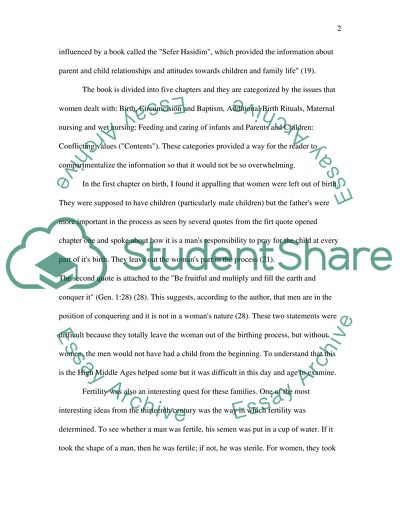Cite this document
(“Critical Review of Mothers and Children in Medieval Jewish History Essay”, n.d.)
Critical Review of Mothers and Children in Medieval Jewish History Essay. Retrieved from https://studentshare.org/miscellaneous/1558948-critical-review-of-mothers-and-children-in-medieval-jewish-history
Critical Review of Mothers and Children in Medieval Jewish History Essay. Retrieved from https://studentshare.org/miscellaneous/1558948-critical-review-of-mothers-and-children-in-medieval-jewish-history
(Critical Review of Mothers and Children in Medieval Jewish History Essay)
Critical Review of Mothers and Children in Medieval Jewish History Essay. https://studentshare.org/miscellaneous/1558948-critical-review-of-mothers-and-children-in-medieval-jewish-history.
Critical Review of Mothers and Children in Medieval Jewish History Essay. https://studentshare.org/miscellaneous/1558948-critical-review-of-mothers-and-children-in-medieval-jewish-history.
“Critical Review of Mothers and Children in Medieval Jewish History Essay”, n.d. https://studentshare.org/miscellaneous/1558948-critical-review-of-mothers-and-children-in-medieval-jewish-history.


